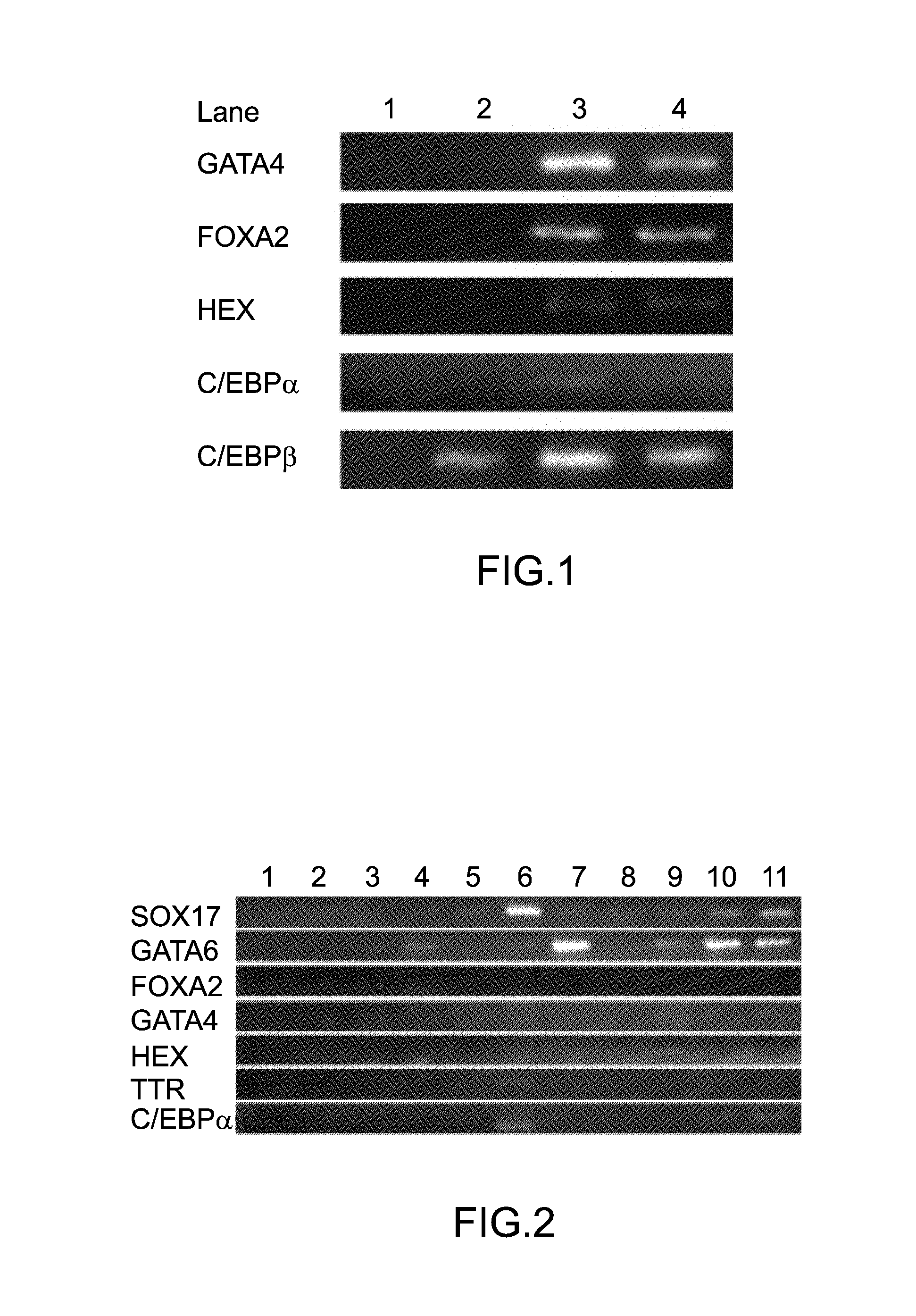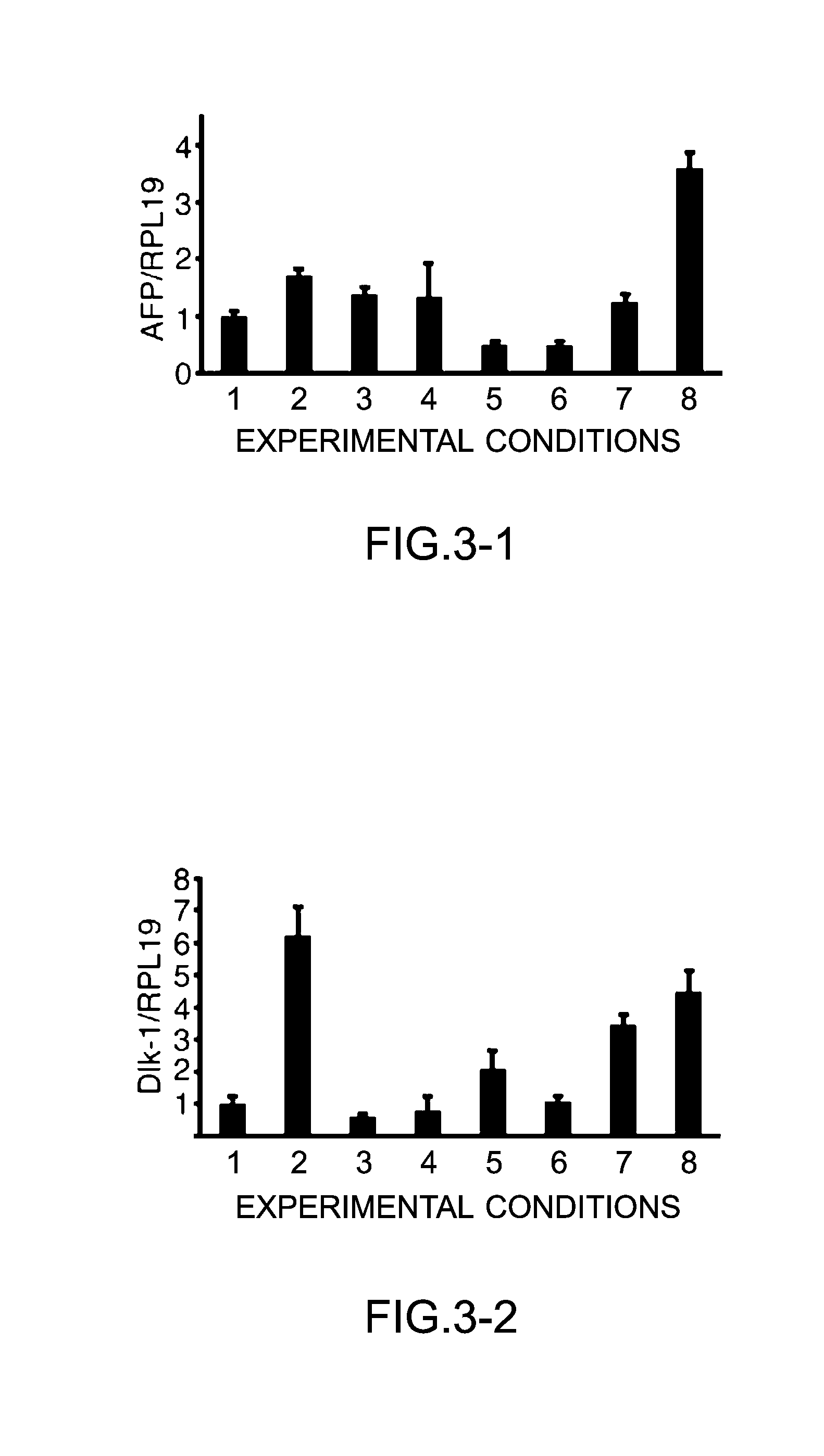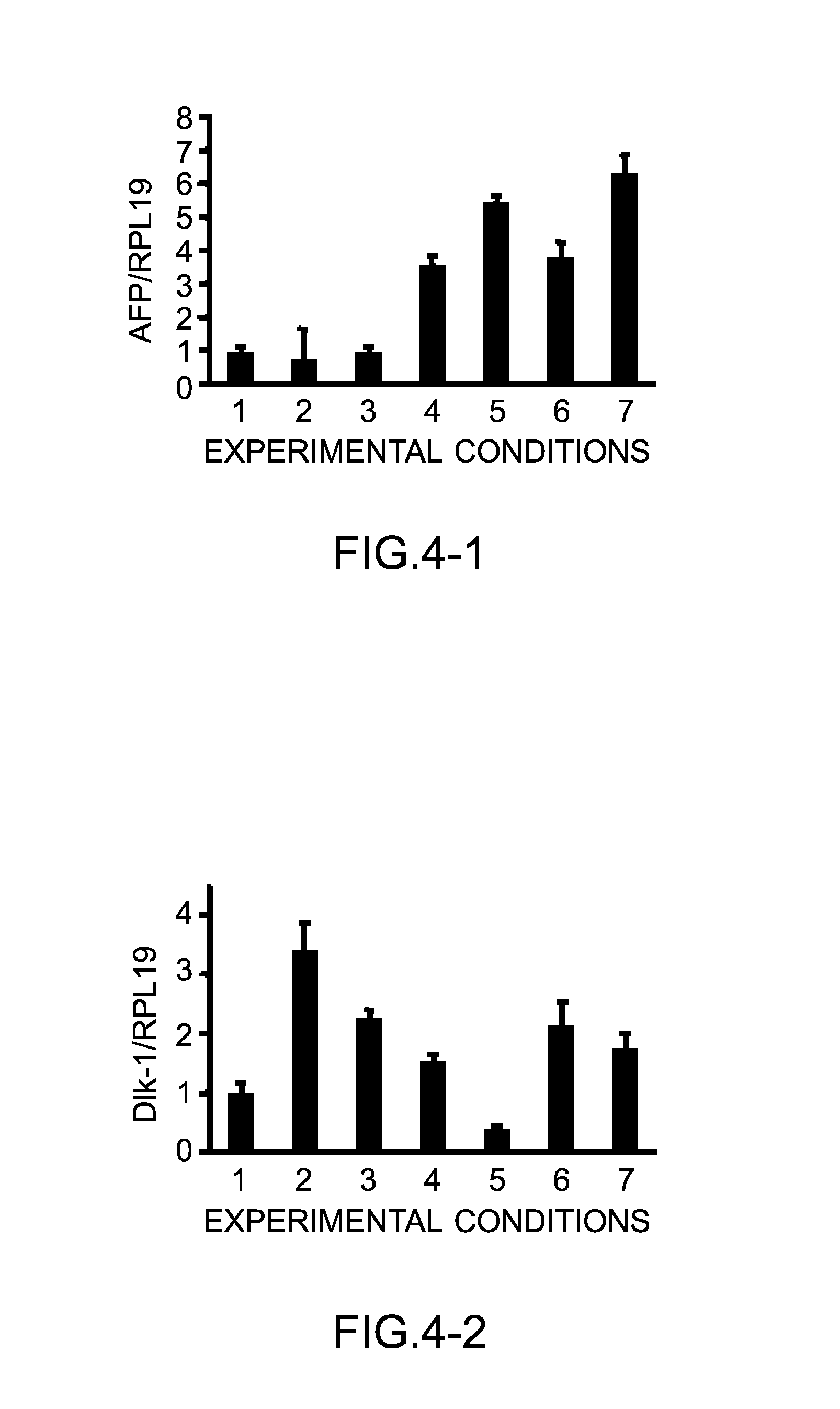Method of inducing differentiation of human pluripotent stem cell into hepatic progenitor cell
a technology of hepatic progenitor cells and stem cells, which is applied in the field of inducing differentiation of human pluripotent stem cells into hepatic progenitor cells, can solve the problems of unestablished cell method of efficient induction, and achieve the effect of inducing differentiation
- Summary
- Abstract
- Description
- Claims
- Application Information
AI Technical Summary
Benefits of technology
Problems solved by technology
Method used
Image
Examples
example 1
Search of Transcription Factors which are Expressed in Fetal and Adult Hepatic Cells and are Unexpressed in iPS Cells
1.1 Experimental Materials and Methods
[0111]Reverse transcriptase (Life Technologies Japan Ltd.) was used to synthesize cDNAs of iPS cells, fetal hepatic cells and adult hepatic cells from 3 μg of RNA. The cDNAs were subjected to polymerase chain reaction (PCR) using the following primers to GATA4, FOXA2, HEX, C / EBPα and C / EBPβ, respectively, and to electrophoresis using 2% low-melting agarose (Lonza) and 1×TAE, for investigations on the expression of GATA4, FOXA2, HEX, C / EBPα and C / EBNβ in the iPS cells, fetal hepatic cells and adult hepatic cells.
[0112]After electrophoresis, the 2% low-melting agarose was irradiated with ultraviolet rays at 254 nm from a UV transilluminator (UVP LLC, NLMS-20E), and a Polaroid photograph (FUJIFILM Corporation, FP-3000B) thereof was taken with a gel camera (Funakoshi DS-300) to analyze an electrophoretic pattern.
[0113]PCR cycles perfo...
example 2
Investigations on Transcription Factors which are Unexpressed by Using Growth-Promoting Agents Alone
2.1 Experimental Materials and Methods
[0121]Human iPS cells (201B7, RIKEN cell bank) were seeded onto a matrigel-coated 6-well plate, and cultured in a feeder-less medium, ReproFF (trade name, Reprocell Inc.) for culture of stem cells maintained in an undifferentiated state, without using a feeder cell, under conventional conditions: 37° C. and 5% carbon dioxide.
[0122]A medium obtained by adding a 20% knock-out serum replacement (Life Technologies Japan Ltd.), 10% Minimum Essential Amino Acids (Life Technologies Japan Ltd.), 2 mM of L-glutamine (Life Technologies Japan Ltd.) and 1 mM of 2-mercaptoethanol to a D-MEM / F12 medium (Dulbecco's Modified Eagle Medium-F12 medium, Sigma-Aldrich Japan) was used as an iPSm(−) medium.
[0123]The following growth-promoting agents were added to the iPSm(−) medium, and SOX-17, GATA6, FOXA2, GATA4, HEX, TTR and C / EBPα were expressed in a manner similar ...
example 3
Analysis on Induction of Differentiation into Hepatic Progenitor Cells by Using a Combination of Growth-Promoting Agents
[0131]Based on the results of Example 2, for the transcription factors, FOXA2, GATA4, HEX and C / EBPα which were not observed to be expressed upon addition of growth-promoting agents, the respective expression vectors thereof were introduced into human induced pluripotent stem cell to attempt to induce differentiation into hepatic progenitor cells.
3.1 Experimental Materials and Methods
[0132]Human iPS cells (201B7, RIKEN cell bank) were seeded onto a matrigel-coated 6-well plate, and cultured in a medium, ReproFF in accordance with a conventional method under the following conditions: 37° C. and 5% carbon dioxide. A lipofection reagent, Lipofectamine LTX (registered trade mark, Life Technologies Japan Ltd.) was used to transfect 0.5 μg of expression plasmids of FOXA2, GATA4, HEX and C / EBPα, respectively.
[0133]As the expression vectors of the transcription factors, us...
PUM
| Property | Measurement | Unit |
|---|---|---|
| Time | aaaaa | aaaaa |
Abstract
Description
Claims
Application Information
 Login to View More
Login to View More - R&D
- Intellectual Property
- Life Sciences
- Materials
- Tech Scout
- Unparalleled Data Quality
- Higher Quality Content
- 60% Fewer Hallucinations
Browse by: Latest US Patents, China's latest patents, Technical Efficacy Thesaurus, Application Domain, Technology Topic, Popular Technical Reports.
© 2025 PatSnap. All rights reserved.Legal|Privacy policy|Modern Slavery Act Transparency Statement|Sitemap|About US| Contact US: help@patsnap.com



